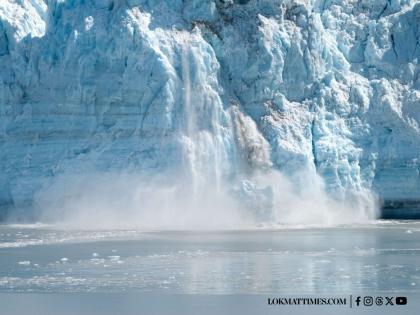Navi Mumbai: MOEFCC to Draft Policy on Coastal Erosion, Groundwater Risks After NGO Raises Concern
By Amit Srivastava | Updated: March 29, 2025 19:03 IST2025-03-29T19:03:01+5:302025-03-29T19:03:28+5:30
NAVI MUMBAI: The Central Government is developing a policy framework to address rising sea levels and their impact on ...

MOEFCC Responds to NatConnect’s Concerns, Plans Policy on Rising Seas and Groundwater Risks
NAVI MUMBAI: The Central Government is developing a policy framework to address rising sea levels and their impact on coastal groundwater tables and erosion, according to information obtained from the Prime Minister’s Office (PMO) public grievance website.
Navi Mumbai-based Environmental watchdog NatConnect Foundation raised concerns through the PMO website, citing research indicating that rising sea levels could elevate groundwater levels, potentially causing flooding from beneath the surface.
In response, the Ministry of Environment, Forest, and Climate Change (MOEFCC) acknowledged the concerns and assured that the issue would be considered in the development of the Ministry’s policy framework.
NatConnect director B N Kumar brought to the Prime Minister’s attention new research findings from New Zealand, which warn that rising sea levels could simultaneously push groundwater levels higher.
"It is high time disaster management authorities prepare for floods emerging from beneath the inland areas," Kumar stated in his submission.
A recent research paper focusing on the coastal city of Dunedin, New Zealand, highlights that rising sea levels may alter groundwater levels, thereby increasing inland flood risks.
The research findings were recently published in a science magazine by AGU, a global organization representing over half a million professionals in Earth and space sciences.
South Dunedin, which already experiences periodic flooding, is expected to face even greater challenges due to rising sea levels. The researchers describe the city as a “poster child” for how New Zealand communities are responding and adapting to climate change.
“These findings,” Kumar said, “reinforce our longstanding demand to conserve wetlands, which act as urban sponges and help protect river floodplains.”
He emphasized the urgent need to maintain spaces where water can expand, instead of filling water bodies under the pretext of infrastructure development. “The government must brace itself for the twin threats of rising sea levels and groundwater flooding, rather than inviting disasters through anti-environment policies and neglecting ecological risks,” he added.
Kumar also urged the Union Ministry of Environment, Forest and Climate Change (MOEFCC) and the Geological Survey of India to study coastal groundwater tables alongside rising sea levels.
Despite India's 7,500 km-long coastline, there has been little serious discussion on the threats posed by rising sea levels, apart from a brief government report on coastal erosion, NatConnect argued.
Furthermore, interference with the natural flow of intertidal water has already begun to flood paddy fields and low-lying areas in Panvel and Uran talukas of Maharashtra’s Raigad district, said Nandakumar Pawar, director of Sagar Shakti. He expressed concern that authorities continue to ignore the worsening crisis.
Meanwhile, another study predicts that by 2040, rising sea levels could submerge:
More than 10% of Mumbai, Yanam, and Thoothukudi
5%–10% of Panaji and Chennai
1%–5% of Kochi, Mangaluru, Visakhapatnam, Haldia, Udupi, Paradip, and Puri
By 2100, the flooding could be even worse, with Mangaluru, Haldia, Paradip, Thoothukudi, and Yanam facing more severe inundation than Tier-I cities, according to a study by the Bengaluru-based Centre for Study of Science, Technology and Policy (CSTEP), NatConnect noted.
Open in app